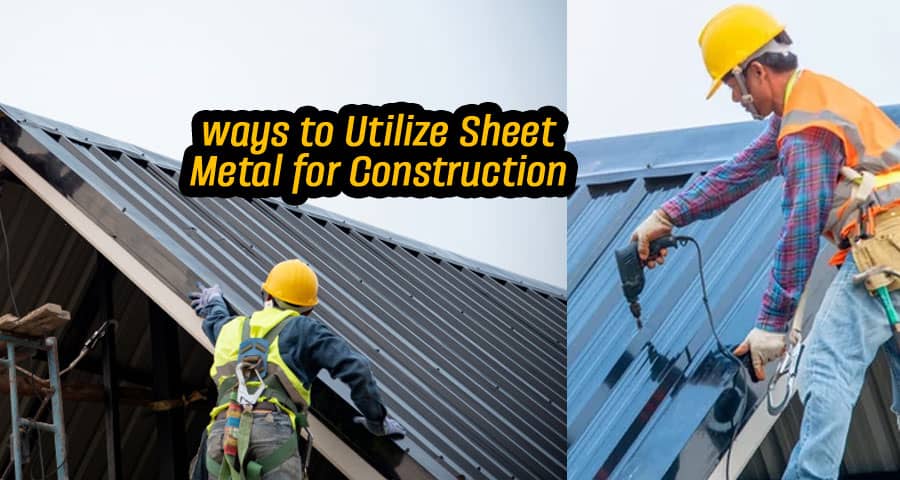6 Ways to Utilize Sheet Metal for Construction: Strength and Versatility

Sheet metal is a versatile and durable material that has found its place in various industries, including construction. Its strength, malleability, and corrosion resistance make it a valuable asset for a wide range of construction projects.
Introduction
Sheet metal, known for its flexibility and durability, has become a staple in modern construction. Its ability to be shaped and fabricated into various forms makes it a go-to choice for architects and builders.
Roofing and Cladding
Sheet metal roofing and cladding provide excellent protection against the elements. Materials like steel, aluminum, and copper can be formed into durable panels that resist corrosion and provide long-lasting coverage for residential and commercial buildings.
Structural Framing
Sheet metal can be used for structural framing in the form of studs, beams, and trusses. Lighter and more cost-effective than traditional materials, sheet metal framing offers flexibility in design and ease of construction.
Interior Design Elements
From decorative wall panels to unique staircases, sheet metal adds an industrial and modern touch to interior spaces. Its sleek appearance and the ability to be finished in various colors make it a versatile choice for creating visually appealing interiors.
Ductwork and HVAC Systems
Sheet metal's smooth surfaces and airtight construction make it ideal for fabricating ductwork and HVAC systems. It ensures efficient airflow, temperature control, and durability in commercial and residential buildings.
Fencing and Security
Sheet metal fencing offers security and privacy while adding an aesthetic appeal to outdoor spaces. From ornamental designs to robust security barriers, sheet metal can be customized to fit different fencing needs.
Artistic and Architectural Features
Sheet metal can be sculpted and shaped into intricate artistic features and architectural elements. From facade accents to outdoor sculptures, its malleability allows for unique designs that capture attention.
Conclusion
The utilization of sheet metal in construction continues to evolve, driven by its versatility, durability, and aesthetic potential. From foundational framing to artistic embellishments, sheet metal offers solutions that cater to both functionality and design.
FAQs
What types of sheet metal are commonly used in construction?
Steel, aluminum, copper, and zinc are some of the most common types of sheet metal used in construction due to their strength and durability.
Can sheet metal be used for both residential and commercial projects?
Absolutely. Sheet metal's adaptability makes it suitable for a wide range of construction projects, from residential homes to commercial complexes.
How do I ensure proper maintenance of sheet metal components in construction?
Regular inspections, cleaning, and addressing any signs of corrosion are key to maintaining sheet metal components. Applying protective coatings can also help extend their lifespan.
Is sheet metal environmentally friendly?
Sheet metal is often recyclable, which contributes to its eco-friendliness. Using recycled sheet metal can further reduce its environmental impact.
Can sheet metal be customized for unique designs?
Yes, sheet metal can be customized through cutting, shaping, and finishing processes to achieve a wide range of designs, patterns, and textures.
